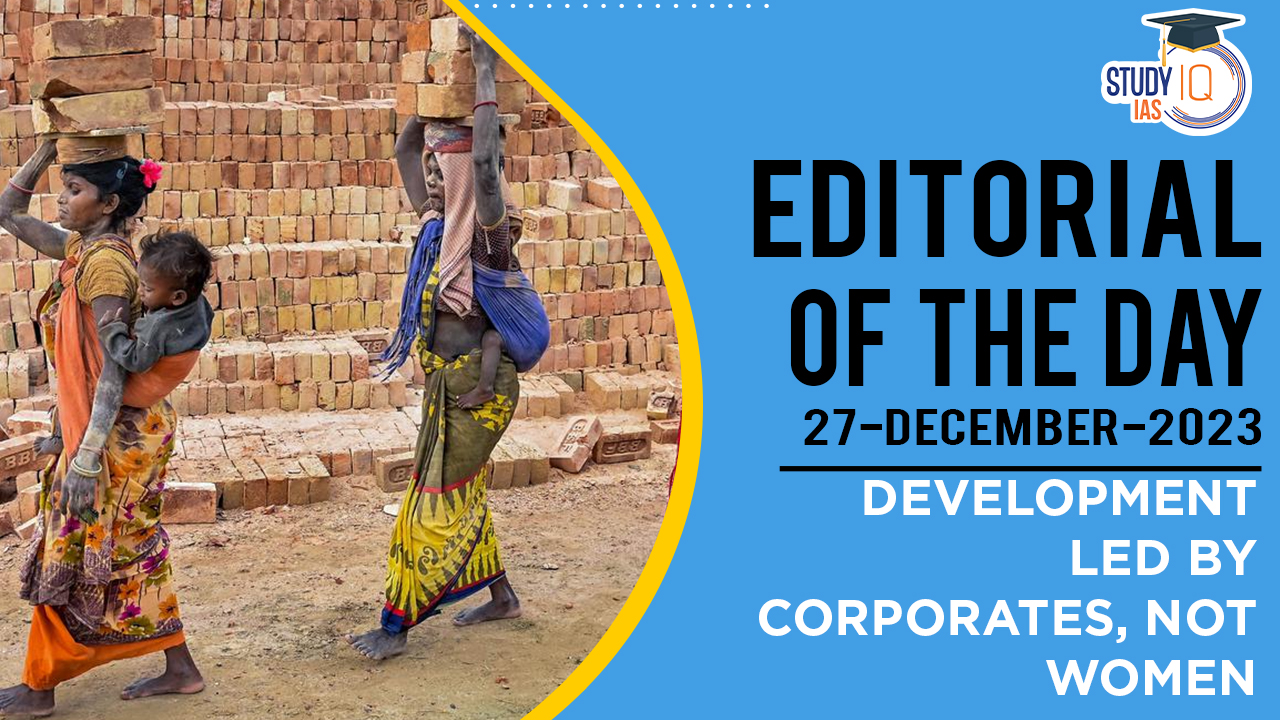Context: The G20 Declaration highlights private enterprise’s key role in sustainable economic growth but lacks clarity on integrating ‘women-led development’ within this private sector-focused macroeconomic framework, creating uncertainties about its practical application.
Discrepancies in Women-Led Development Schemes
- The concept of ‘women-led development’ introduced by the Indian government is not clearly defined, making its practical implementation ambiguous.
- The Indian government’s rebranding of schemes from women’s development to women-led development is criticised as a cover for decreased investment in women-specific projects.
- The Gender Budget, intended to prioritise investment for women, has become a mere accounting exercise, failing to significantly increase or focus on women-specific schemes. In 2023-24, only 39% of the Gender Budget was allocated to women-specific schemes (Part A), with the remaining 61% going to broader schemes (Part B).
We’re now on WhatsApp. Click to Join
Women’s Economic Independence and Policy Impact
- There’s a notable decline in women’s participation in regular waged work, dropping from 21.9% in 2018-2019 to 15.9% in 2022-2023.
- Over 95% of working women in India are in the unorganized sector, lacking job and income security.
- Women are predominantly employed in government flagship schemes but are underpaid and not recognized as government employees.
- The proportion of women engaged in agriculture increased, indicating a shift to unpaid family farm work.
- Government policies, particularly the reduction in budget allocations for MGNREGA, have adversely impacted women, particularly affecting those in the rural workforce.
The economic policies of the Central government are viewed as favouring the wealthiest at the expense of marginalised groups, including women, thereby undermining the concept of women-led development.


 Utkal Divas 2025: Odisha Foundation Day ...
Utkal Divas 2025: Odisha Foundation Day ...
 List of Military Exercises of India 2024...
List of Military Exercises of India 2024...
 GPS Spoofing and Its Impact in India: A ...
GPS Spoofing and Its Impact in India: A ...





















